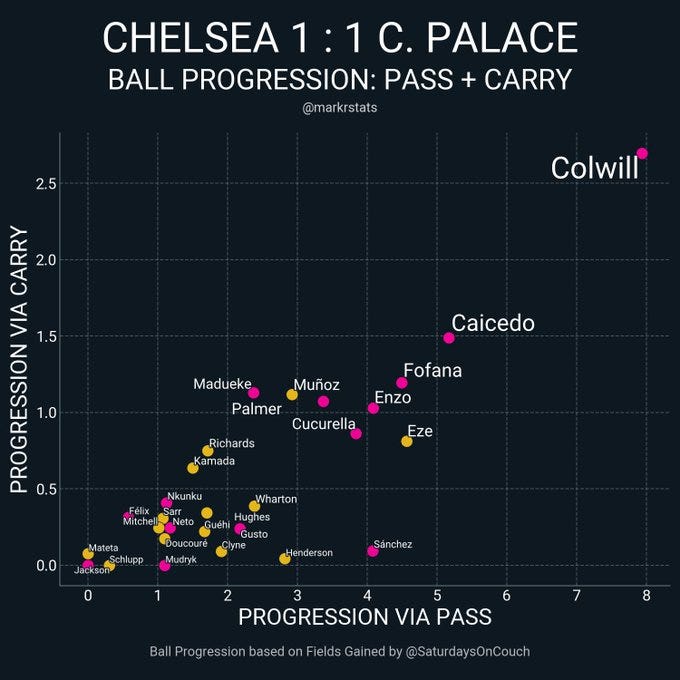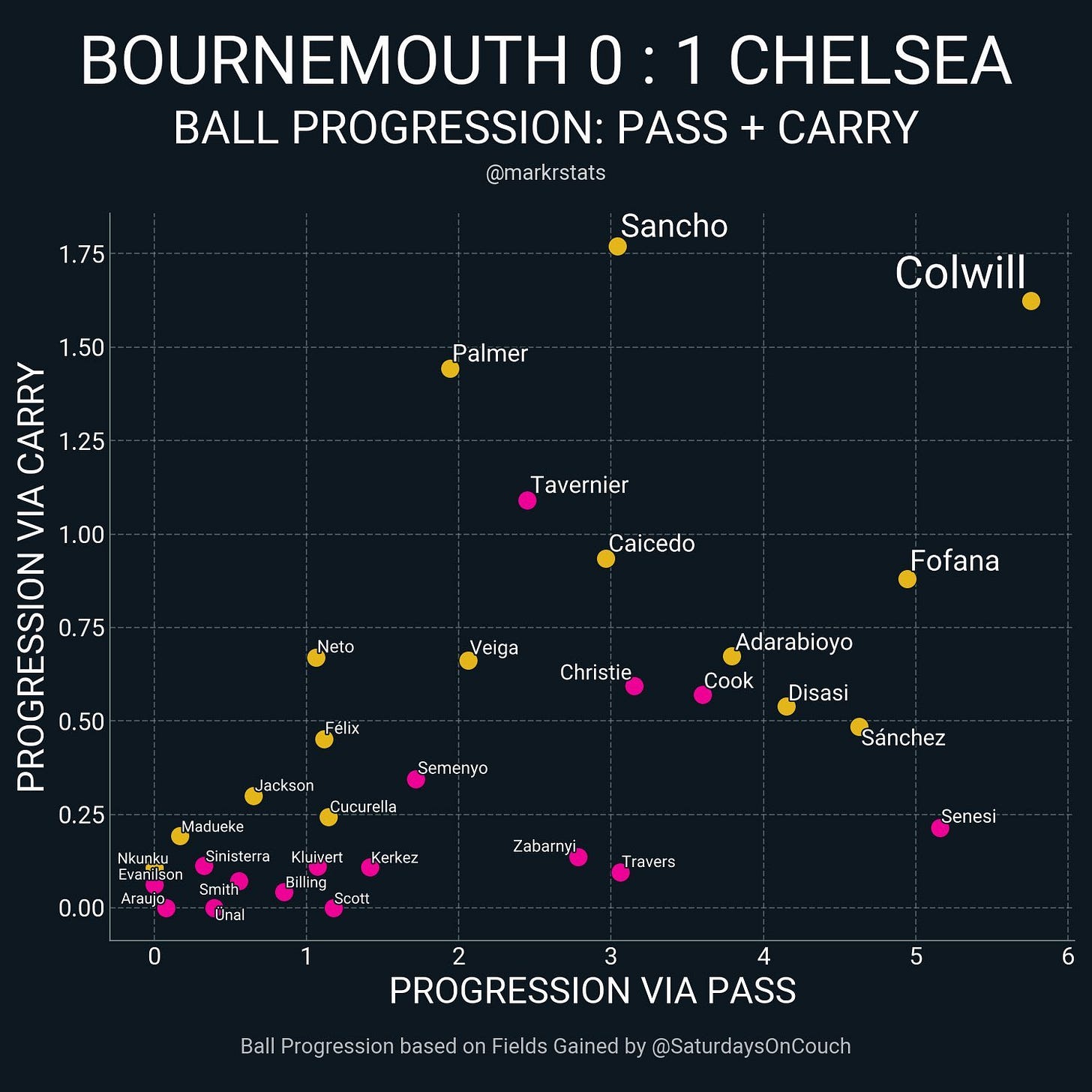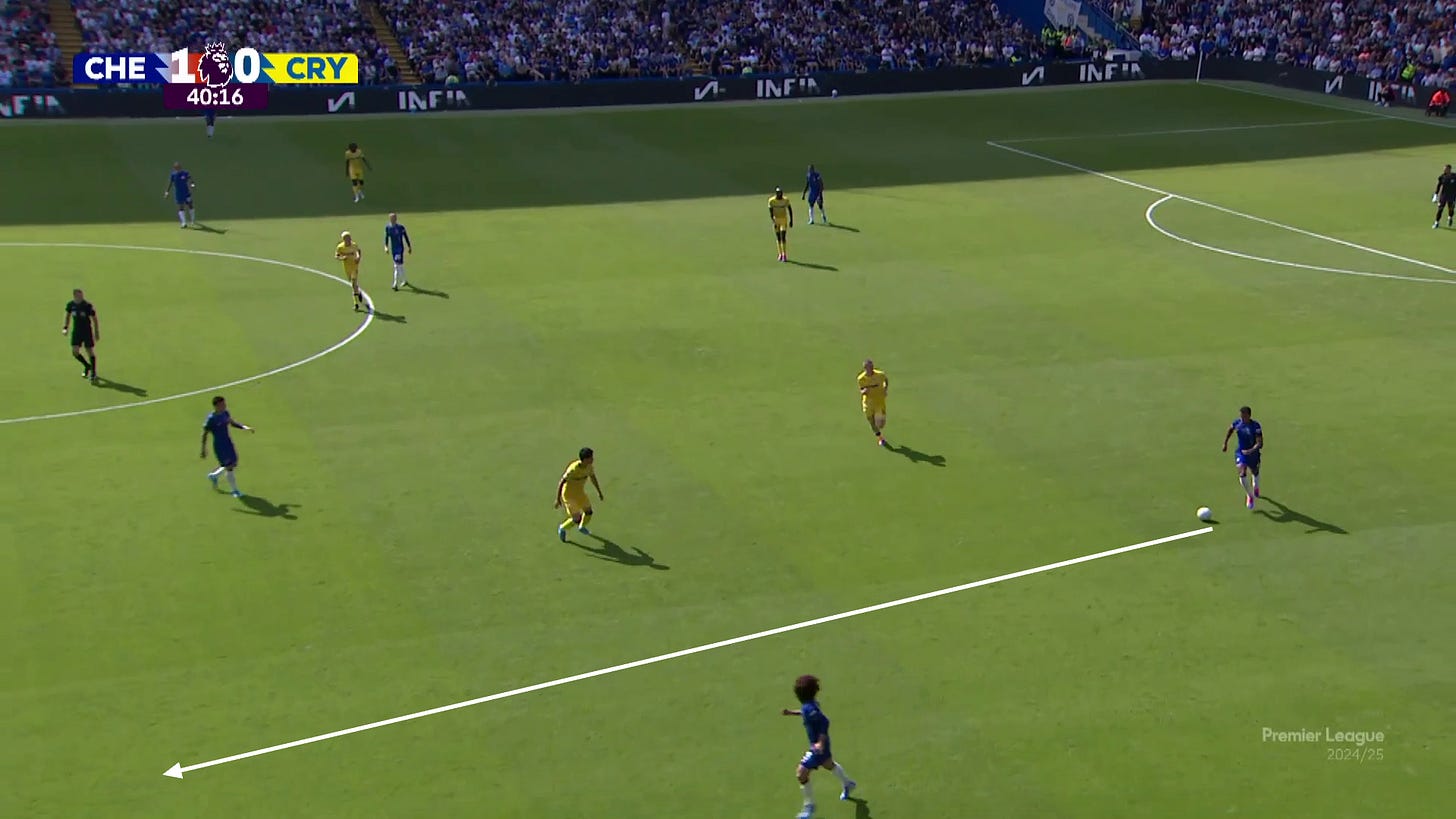Levi Colwill has quickly become Chelsea's hidden playmaker
The Cobham graduate has started the season strongly, proving to be a hidden creator in Chelsea's passing system
Levi Colwill becoming one of Chelsea’s strongest defenders should not be a shocking revelation.
From the moment people began to see his talent within the competitive ranks of Cobham, to then shining on loan for Huddersfield and Brighton, it became clear that this was a defender the club could not afford to lose.
Although his departuren came close in the summer of 2022, Colwill staying and then committing his future 12 months later with a six-year-deal avoided another Cobham regret.
It would be naive to completely rule out an exit in the future, given the summer we have just witnessed where Conor Gallagher, one of the club’s most trusted players last term, became an outcast and then sold to Atletico Madrid. Colwill’s contract situation is more similar to fellow Cobham peer Trevoh Chalobah, who was also shunned before securing a loan to Crystal Palace on Deadline Day.
This is why many football-based conversations around Chelsea players can fall on Clearlake ears. Just because Colwill may fulfill his high potential does not mean he will remain in the club’s plans.
But for the purposes of this piece, he very much is one of Enzo Maresca’s most valuable players so far this season.
Starting every Premier League game so far alongside Wesley Fofana, and coming off the club’s first away clean sheet in this calendar year at Bournemouth, a similar complimentary piece from The Athletic cites that he has already been earmarked as a potential captain. Probably a sensible choice given the problems around Enzo Fernandez and the seemingly never-ending injury saga for Reece James.
In a pure defensive sense, Chelsea do need some improvement structurally. Already conceding 51 shots against (11.25 per 90) which is only two less than Everton. In xG against via The Analyst that accounts for 5.05 which places them 9th so far.
Chelsea certainly are not controlling games in the way Maresca would have hoped, demonstrated by the knife edge nature of Saturday’s game, which saw two Bournemouth efforts rattle the woodwork and required Robert Sanchez penalty heroics.
But from a passing point of view, Colwill is one of the few standouts actually looking to instill the coach’s vision.
Colwill played a ball into the final third 11 times at The Vitality Stadium. Graphs have showcased his ball progression against Wolves, Crystal Palace and Bournemouth, leading the way in all three games compared to any other player on the pitch.
So how does this influence look on the pitch?
Colwill is usually situated closest to Sanchez from goal-kicks. And very regularly the first pass the keeper plays is to the feet of Colwill. So he is naturally getting on the ball more frequently.
For some necessary context, you expect defenders to complete a lot of passes per game given the nature of their position, and how they are able to recycle the ball in uncontested areas.
Colwill’s passing stats are not worth citing because they stem from a series of safe passes to his defensive partner, they are actually getting the Blues further up the pitch.
Colwill regularly advances with the ball as Chelsea’s left-sided centre-back, looking out wide left to find either the winger (Pedro Neto) or fullback (Marc Cucurella) …
From here we see the benefit of the fullback inverting into midfield, able to exchange passes and set Neto down the flank.
A similar combination was used later in the same half against Crystal Palace, this time with Enzo Fernandez involved, whose misplaced pass prevents another burst from Neto down the left.
Against Wolves we saw Chelsea using six players at the beginning of their buildup, looking like a 3-3 shape or 3-2 shape.
This formed by Fofana shifting to a right-centre back role, Cucurella coming into a left centre-back spot, with Malo Gusto inverting, Moises Caicedo the anchor, and Enzo Fernandez dropping back. This can also just use the first four as Wolves pressed Chelsea high in the opening half of a pretty manic game.
The pieces are all there for Chelsea to exchange passes and build up from the feet of their keeper. However, execution remains a valid concern with Wolves gaining a lot of joy in winning the ball in Chelsea’s half.
Beyond structure, the execution of Colwill’s passing is noteworthy. Colwill has completed 277 passes out of 299, a passing accuracy of 92.6 per cent, as recorded by Fbref. But it is the variety in that passing that is becoming noteworthy and effective.
Teams would quickly catch on to the regular cycle of Colwill receiving a pass from Sanchez, baiting an opposition press before opting out wide to the left for a neat combination.
Against Wolves we saw his range of passing come to the fore…
Showing a growing relationship with Nicolas Jackson, cutting out the middle men and finding the centre-forward dropping deeper to receive the ball.
Another deep pass straight through the heart of Wolves imploding structure found Jackson’s slick back heel..
Opening up room for Caicedo, who was quickly offered the two options of Cole Palmer and Noni Madueke who consistently found space on the left side of Wolves defence.
What about against a deeper defensive line?
BELOW: Colwill could easily look for Cucurella retreating, turn back to Fofana, or even back to his keeper as he is quickly pressed down.
But instead, he drills a low pass beyond the press and into the feet of Fernandez in a pocket on the left.
Looking back to the Bournemouth game, Colwill ventured forward to create more directly against a well structured Bournemouth defence. Stretching his legs and threading a nicely weighted pass into the box for Jackson, whose shot was well saved by Mark Travers.
The numbers already show a boost in progressive passes this season compared to last. Some context of a very small sample nice is needed, so take these numbers with a pinch of salt.
Colwill is playing 26.88 forward passes per 90 compared to 20.46 last. The accuracy of those passes reaching over 87%, 77% last term.
Long passes per 90 are relatively similar (4.6 v 4.17) but the accuracy is 68% to 40.69.
This is likely to even out over the course of this season which is why we are still in the “small sample size” phase of the campaign. I’d be intrigued to revisit these numbers in 10/15 games time. Though these games do matter and showcase at the very least, a growing influence for a defender in Chelsea’s build-up from deep.
You always have to ponder how opponents will look to counteract this. Do you look to press Colwill more with the risk his quality may open the door for a dangerous attacking opportunity? Or do you sit off, not falling for the bait, but instead risk him stepping into midfield with the ball and using that vision closer to goal?
Whatever opponents answer, you have confidence Colwill has an ability to react to it and adapt, something which this Chelsea team needs to be ready for.
There are still many uncertain parts to this Chelsea team. The goalkeeper, midfield and up front all have their various concerns. Though Colwill seems a guaranteed starter and his performances justify that trust so far.
Subscribe to YouTube channel SonOfChelsea and you can listen to the show on your favourite Podcast provider.
































